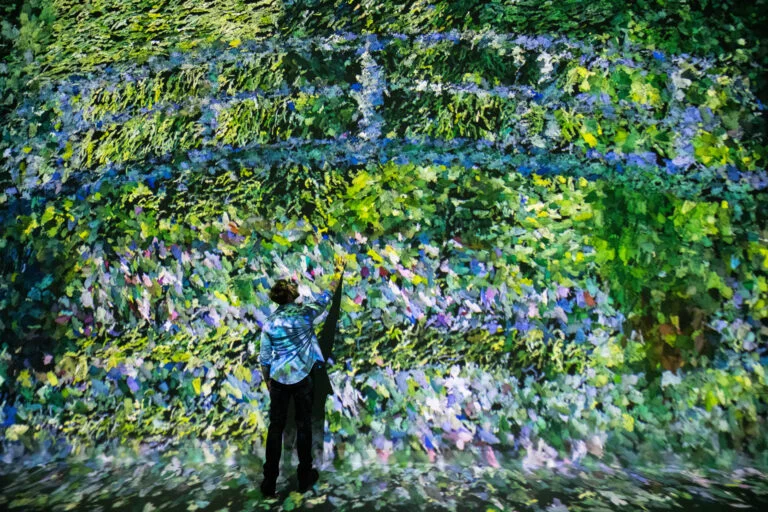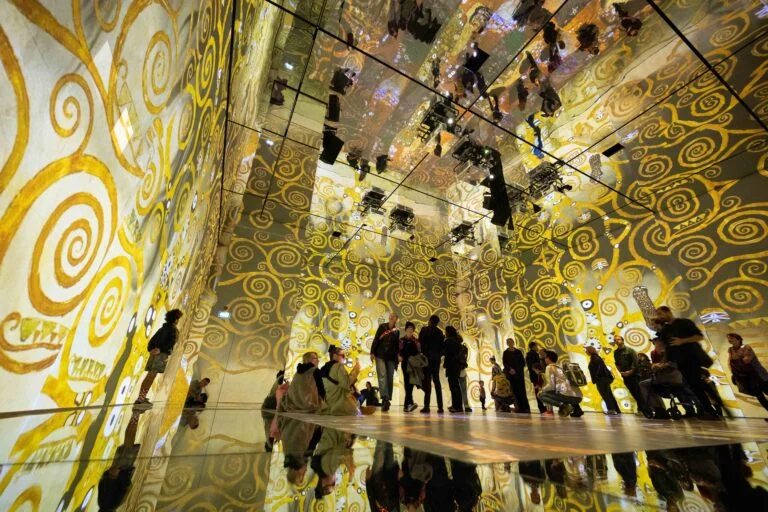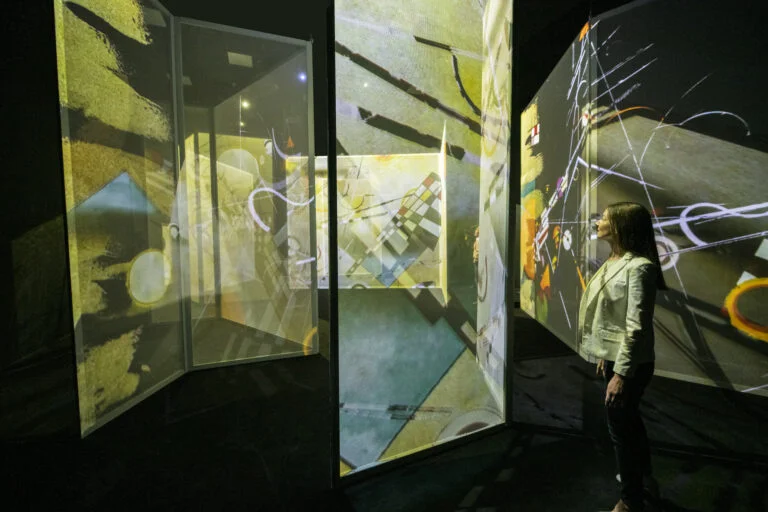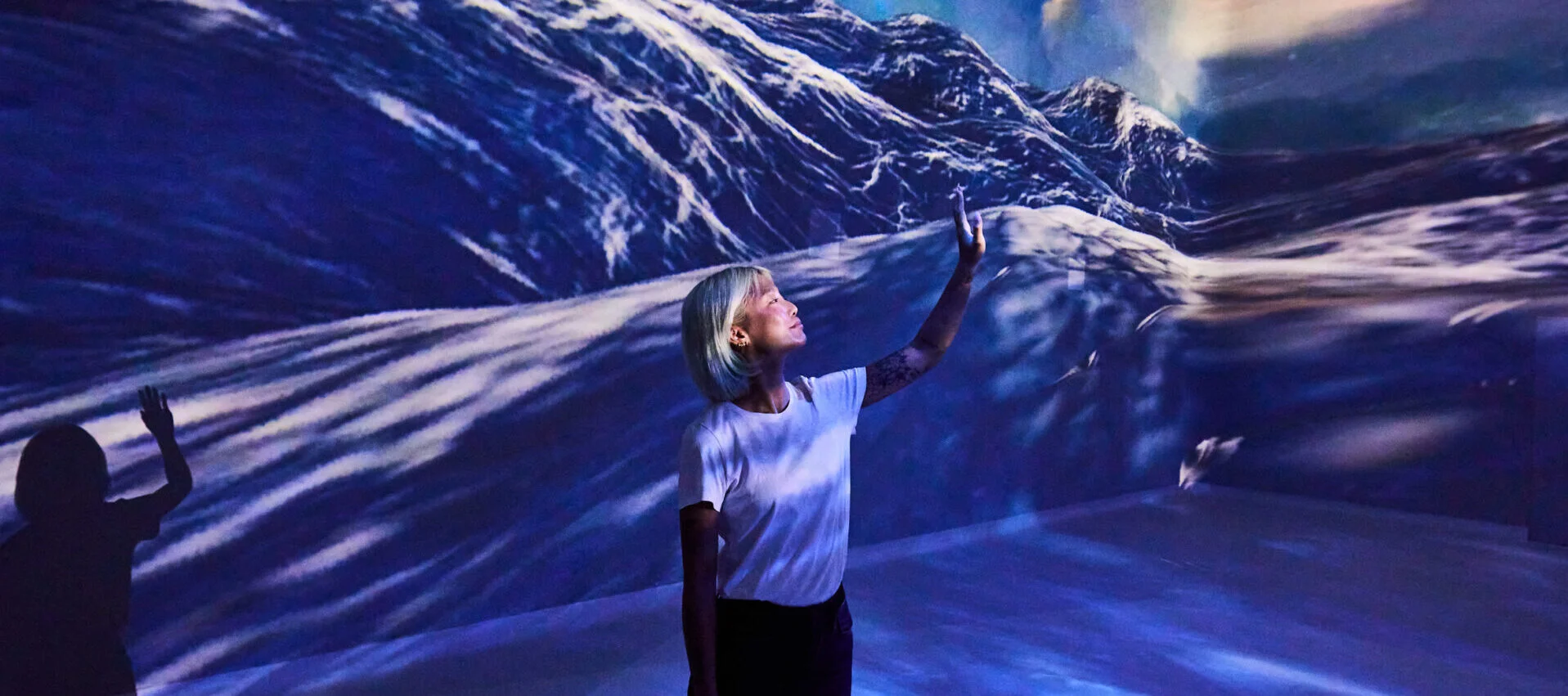According to Frameless, boundaries hemming in great works of art have had their fifteen minutes of frame.
After similar pop-ups projecting the work of Van Gogh and Frida Kahlo, London’s now home to a permanent immersive digital art experience, in which you’re not merely looking at the images, but are enveloped by them.
You’ll find Frameless taking up an impressive 30,000 square feet of space in the new Marble Arch Place complex just behind the tube station, making the show “the biggest of its kind in the UK”. And to be clear, its “kind” of show is one in which the walls, floors, ceilings, and you are all covered in high definition projections of famous & iconic artworks. Apparently, it boasts a total of 479 million pixels delivered by a million lumens of light, as well as a score of classical and new, specially commissioned music played over 158 surround-sound speakers. And, no, we weren’t quite sure what a lot of those figures meant either, but having experienced it in the flesh, we can confirm that Frameless really is an intense trip for the senses.

Jordan Curtis Hughes
You’ll descend via a set of kaleidoscopic escalators into a sleek, subterranean gallery, with a stripped-back, Scandi-style café space on one side (selling the usual fare, as well as teeny tiny works of art in cake form), and the main Frameless experience awaiting you on your right.
The show itself is divided up into four main gallery areas, each of which is preceded by a short introduction explaining the theme or artistic movement that’s explored within. These introductions can be a bit cursory and superficial at times, and it would have been interesting to hear more on why the curators chose the paintings on display, considering they’re not constrained by sourcing physical copies like other galleries. There is at least a QR code to scan, so you can namecheck the paintings on your phone as they appear within the gallery. First up is:
Beyond Reality: Dropping you in at the deep end, Frameless introduces you to its bedazzling technology with artwork that was already pretty brain-melting to begin with. Here, in an infinitely reflective room with mirrored floors and ceilings, you’ll watch as a series of animated surrealist and symbolist paintings wash over you, including Dalí’s melted clocks, terrifying hellscapes by Hieronymus Bosch, Arcimboldo’s portraits of people as books and vegetables (which we’d describe in our esteemed artistic opinion as ‘pretty jokes’), and more.

Richard Blake
Colour in Motion: Next up is a chance for you to dip your own finger in the digital ink pot. Thanks to “advanced motion tracking”, your movements here prompt brushstrokes scattered across the floor to slowly float up the walls and re-assemble famous Impressionist masterpieces by Van Gogh, Georges Seurat, Claude Monet, and others.
The World Around Us: The third room is the largest of the lot, and for us at least, was the most emotionally stirring. A lot of that’s down to the dramatic soundtrack of classical and romantic-era music, which, paired with the sheer scale of the room, and the all-encompassing projections on all six surfaces, allows you to really get caught up in the world of the painting. Those paintings are plucked from various time periods, but all depict landscapes – some real, some fantastical. You’ll be dropped in Venice’s Piazza Di San Marco as Canaletto himself saw it, and you’ll get to see the Sunrise over Norham Castle as depicted by JMW Turner. Most impressive is Rembrandt’s Storm on the Sea of Galilee, whose foaming waves are animated so effectively that they really feel like they’re churning around you, while lighting forks crackle overhead. Finally, there’s –
The Art of Abstraction: The final gallery plays out its projections on translucent screens, arranged as a maze for you to wander through. It’s designed to reflect the disjointed nature of its subject: abstract artwork by the likes of Taeuber-Arp, Mondrian and Klee. The soundtrack in here is suitably jazzy and experimental; a natural partner to the work of Kandinsky, whose synaesthesia meant he experienced sounds as vibrant colours and shapes.

Jordan Curtis Hughes
All in all, Frameless makes for one beautiful multi-sensory experience. Thanks to the music and the hypnotic animation, it’s very possible to stand here and get lost in thought, letting the art wash over you. That’s both its selling point and its drawback: you’re not able to choose where to focus your attention within paintings, or even which order you view them in. It also takes away what is arguably a big component of the artists’ intentions – it’s hard to get a read of the composition or perspective in the pieces when you can’t see the whole image at once. It does, however, have the capacity to draw your attention to details you might have missed before – who knows, maybe this is a new way for us to practise what art historians call ‘slow looking’ in a fast-paced world.
It doesn’t feel like Frameless is going to be replacing traditional art galleries any time soon, but it doesn’t have to – it’s just another, pretty awe-inspiring way to experience some of the most beautiful pieces in Western art history. It feels like a world away from the bustling city above your head; somewhere you can go and get lost for an hour…
…or at least 15 minutes.
NOTE: Tickets for Frameless start at £25, and you can book here.
Frameless | 6 Marble Arch, W1H 7AP
Fancy taking in some static art? Here are the best exhibitions showing right now.
